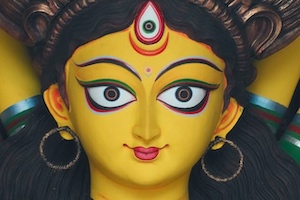Kumartuli: A concoction of traditions & contradictions
The Statesman | 19 September 2025“We were never in a good space commercially, and we still aren’t,” admits Babu Pal, joint secretary of the Kumartuli Mrit Shilpi Samiti. But he is quick to note a silver lining: the export market.
“While traditional clay idols, because of their weight and fragility, cannot travel overseas, lighter versions made of fibre or expanded polystyrene (EPS) or thermocol, are finding their way to the UK, Canada, the USA and beyond,” says artisan Ruby Dey, pointing to the quiet shift that has allowed Kumartuli’s craft to cross borders.
Order for exports, Pal explains arrive well before the festival season here, giving artisans work during otherwise lean months. The advance payments for these overseas orders serve as the foundation of Puja production in Kolkata, underwriting the idols that will be unveiled across pandals, late September. Kumartuli, in this sense, survives on global currents that, paradoxically, keep its local heartbeat alive.
Beyond sustaining livelihoods, Kumartuli’s craft is also evolving into a performance art. The festival today is no longer only about continuity; it is also about a spectacle. In the city’s Puja landscape, themes have become contests of imagination, often straying into cinema, literature, and political allegory. One artisan recalls how Ritwik Ghatak’s Meghe Dhaka Tara once became the theme of a Puja, demanding that Supriya Devi be sculpted into the iconography. Elsewhere, Sholay was staged, requiring Hema Malini to make an unlikely appearance alongside the goddess. “We have to comply with these demands, there is no other choice,” the artisan concedes, with a shrug that conveys both resignation and resilience.
Yet as Babu Pal points out, the overwhelming majority of idols continue to be made in their traditional form. Themed extravaganza attracts attention, but they remain a fraction of the whole; the bedrock of Kumartuli’s work is still the timeless image of Durga as she has been worshipped for generations.
That perpetuity is preserved most poignantly in the hands of veteran sculptors like Anima Pal. “I mostly make smaller clay idols,” she says, “which go to families and local Pujas in Howrah, Shibpur, Burrabazar and elsewhere. Young boys and girls come to fetch the deities to mark the festival in their own homes and lanes.” In her words lives another Kumartuli: not the grand spectacle, not the global export, but the intimate festival of neighbourhoods and households, where tradition endures in modest courtyards.
Kumartuli’s narrow alleys pulsate with contradiction. Amateur models pose between half-finished idols, Insta-‘grammers’ chase the fall of light against clay torsos, and tourists treat the workshops as a living museum. The lanes are as much a backdrop for self-display as they are the forge of divinity. This influx signals Kumartuli’s immense scope for popularisation – its ability to be staged, consumed, and endlessly reproduced. And still, the artisans struggle, embodying the juxtapositions that make Kumartuli globally visible, artistically indispensable, yet commercially fraught.
